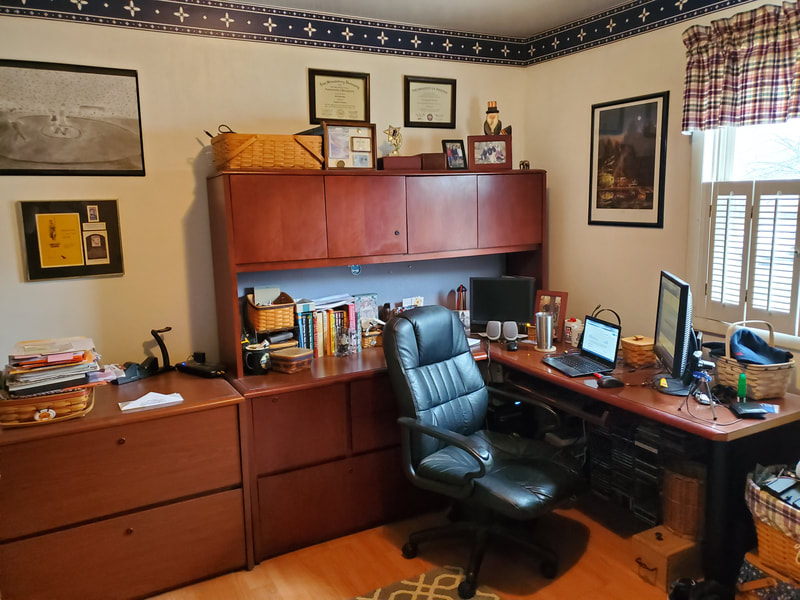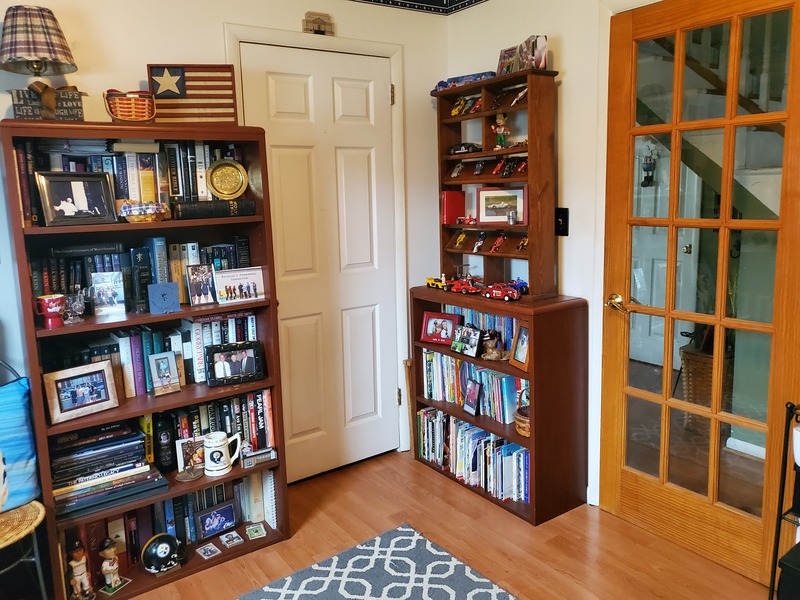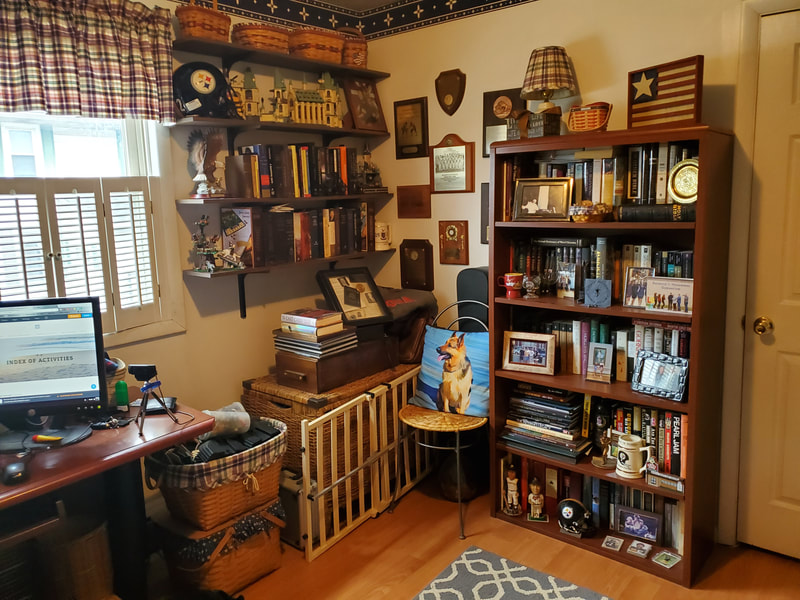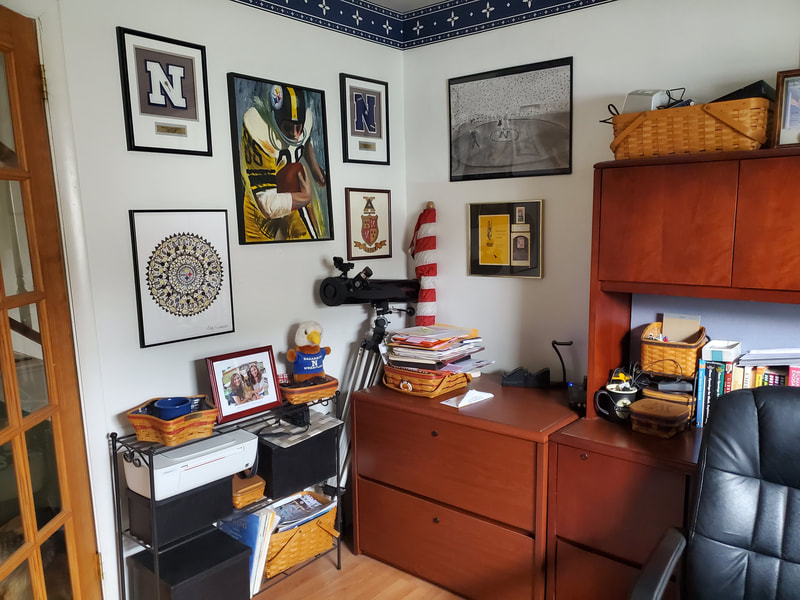|
In this post I will address what you need to work successfully from home:
Over the past week it seems second to articles about the spread of COVID-19, are posts about the challenges of working from home. As someone who has worked from home for 25% of his professional career, I'd be in the ultra net worth category if I had a dollar for every comment I've heard related to 'how nice it must be to work at home.' Now, I see comments related to all the challenges from pets and family members making unexpected appearances on video calls to either feeling isolated or spending too much time in the house with the family to not being sure how this whole WFH thing is supposed to actually work. This is understandable. To start with an assumption, the people making these posts likely did not want to work from home. Further, they've been told to do so, with short notice and little guidance. Additionally, their personal life has probably been in upheaval from school closures to necessary items being unavailable for purchase to eating at home because restaurants are closed (except for takeout) and all venues where people congregate have been closed making it rough on people in general who are more or less social beings. Clearly it is hard to focus on a new work environment and way to work within this upheaval of everything else. Here is what you need:
Connectivity & Redundancy Almost goes without saying in this day and age that you need to have an internet connection with enough speed to handle uploading and downloading documents and streaming video. You also need to have a desktop or mobile device that can process business level workloads, or modify how you work to accommodate what you have. Personally, I have a five or six year old Chromebook. This is not ideal for business, but it can work. Typically, I have three or four browsers open with a half dozen to a dozen tabs running on each on my business machine. This doesn't work on the Chromebook. I try to keep it to two browsers and less than six tabs per. If my connection drops, it can take time to recycle a modem, so have your cell phone nearby to at the very least alert the office that you are having connectivity issues. Your cell phone should be your redundancy to your home internet connection. Typically, a wi-fi hot spot such as a public library, Starbucks or other location with free wi-fi is a good back up if your connection goes out for a period of time, but with COVID-19 that is not an option. A Dedicated Work Space I know people who like to take their laptop and sit outside on a nice day, but I've found that to be detrimental. For starters, I really like having my second screen and can't stand the touchpad on my laptop, so I use a mouse. I also like my bluetooth headset and that has to be plugged in and connected to my laptop, so it results in carrying a lot of stuff to another location. The dedicated work space for me provides normalcy and indicates to my family that I am working. I have a desk, comfortable office chair, and the room has a door. When I first started working from home, my youngest daughter was still in elementary school, so I put in a french pane door. In this way she could knock and wave to me when she got home. If I was on a call, I'd wave back and if not I'd open the door and ask how her day was. Not everyone has an entire room available to themselves, but find a space that you can call your own, that other family members identify as your work space, and that you use when you are at work.
If there are two or more of you working from home, attempt to find spaces far enough apart that you don't hear one another's calls and conversations or appear in one another's video background. Working in an open office environment, where everyone is working for the same company on similar work is one thing, having two people from two different companies working together will be distracting. Though it may also be enlightening. Try not to use this same space for your non-work activity, at least until you get more acclimated to working from home and have a good sense of when you are on and off the 'clock'. If you do, the likelihood of working during non-working time will go up as you 'quickly' check email. A Daily Routine Your routine will change when you shift from going to the office to working from home. It is up to you to what extent it changes. When I first started working from home, it was hard to differentiate between work hours and personal hours. I'd get up, walk by my work space and 'just check a few emails'. For my first employer, I had to have an office phone in addition to my cell phone, so I'd see the red light flashing that there was at least one message for me. This led to me working very long days. The routine helps create habits and allows you to distinguish the two worlds that are colliding in your home. Wake up and get ready. While it is generally accepted to be a bit more casual when working from home, don't take it too far too fast. Video conferencing is critical to working from home. Depending on your company culture and industry there will be varying standards for work from home attire, but more important to how you appear to peers, vendors and clients is how you feel about yourself. So keep your pre-commute morning routine as consistent as possible. Then, consider what time you'd leave for work. What is your commute time? If it is 45 minutes, maybe start work when you would normally leave and establish some breaks during the day for those 45 minutes. Same goes for the end of the day. If you typically end at 5:30 maybe extend your overall day to 6:15, but take some additional breaks throughout the afternoon. Planned breaks are critical because when you work from home you don't move around nearly as much as when you go to an office and work in one (will discuss more in schedule). Think of the walk to your desk from the parking lot, walking to meeting rooms, to someone else's desk to ask a question or get feedback, to the cafeteria or going to lunch, and using the bathroom. In an office building this can add up to a lot of steps in a day. In your home, probably not so many. Thanks to my Fitbit, I can confirm this. Once your day is done, make it done. While there will be instances when you have to work outside of normal business hours, do it only for instances that require it. If the call or email can wait until the morning, let it go until then. How you define your work schedule can really help in this regard. A Work Schedule Working from home requires you to be better organized, because there are a great many more distractions at home than there are in the office. As mentioned above, determine what your start and end time on a typical day will be. Let's assume a nine hour day, with one hour for lunch, beginning at 8:30 and ending at 5:30 with a 45 minute commute each way. Your potential window of work is now 7:15 to 6:15, or eleven hours. No, the idea is not to work eleven hours, but instead to work eight of those eleven and carve time out of your day to compartmentalize likely distractions. Maybe you typically rush out the door, well consider starting at 7:30 or 7:45 in order to start your day in a less hurried state, or end earlier. Regardless of what time you decide to start, make it consistent. Be at your desk at that time, ready to go each day. Have your coffee or water with you, don't sit down and start the day with a break by getting up and walking to the kitchen right away. Some people like to plan their day in the morning, others like to close one day by planning for the next. Pick one, it will make you more productive. Once you pick one, block time on your calendar for the time you need each day. I prefer to plan in the morning after scanning my email, slack channels, and checking my calendar for the day. This allows me to catch anything that came up overnight. Try to establish breaks for yourself throughout the day. Block time each day for lunch, since you are at home, maybe you want to use 30 minutes instead of an hour. It is your call, but put it on your calendar and stick to it. It is really hard to focus on a single task for more than 50 minutes or so and on more than one for greater than two hours. Establish some 15 or 20 minute breaks throughout the day. Use this time to get up, move around, see how the kids are doing, get some fresh air, take the dog out, anything except sitting at your desk. If WFH is new to most or all people and you have direct reports, have check-ins with them. It is likely that most people on your team are struggling with these changes. Depending on the number of reports you have, you could set up a 15-30 minute weekly call with one person, or have calls with small groups of people. Use these calls to see how people are doing, what do they need, what would help them do their work better, where are the gaps? While scheduled, keep it social like you ran into them in the hall. If you don't have direct reports, odds are pretty good you have friends at work. Take some time throughout the week to reach out to them for 15-30 minutes to catch-up. Working from home naturally isolates people from one another, and as a result you have to make an effort to interact with co-workers. Hopefully your management will recognize this as well and encourage it by allowing communications for non-work related topics, which help people get to know one another. This in turn helps them work better together, because they have a connection other than we've both been assigned to this team. And again, set an end time and stick to it. With WFH it is very easy to accept meetings outside of business hours. Try to avoid it. Set your work day and distinguish it from your personal life. New Norms & Tools I've mentioned several of the new norms when working from home above. You will undoubtedly receive guidance from your company. This guidance will likely be significantly different from company to company. I was fortunate in that the last company I worked for was founded as a distributed work force. It was expected that nearly everyone would work from home. As a result, there was an emphasis to build cohesion and culture across geographic locations and time zones. I've found that traditional brick and mortar companies struggle with allowing employees to work from home. Part of this is on management itself, which fears people will be unproductive, take more personal time, and if I can't see them how do I know they are working? At the same time, management is concerned with internal tensions when some employees can work from home and others must work from the office. In the case of most people during COVID-19, the latter tension is removed because WFH is being mandated for all. I can't speak to each or any company's policies at this time for WFH, and I'd imagine a good bit is being created as situations arise, but at the end of the day simply demonstrate you are getting the work done. A big part of getting the work done is acclimating to WFH, which is largely covered above, but while you can adjust you may not be able to get the work done if you don't have the right tools at your disposal. Connectivity and redundancy in case your primary internet goes down will keep you working and connected to the office. Ideally, you will have at least a company issued laptop. A personal cell phone is probably assumed, but if the expectation by the company is for you to regularly use it, then there should be some form of compensation offered. Many solutions today are cloud based accessed by a web browser, but there are many companies that continue to internally host data and information. If you traditionally worked in the office through the company network, you will now need to connect more securely while working remote. Your company will either provide you with VPN access or you may need to request it. I mentioned video calls being critical. When WFH as opposed to in-person, you can lose a lot of context when you can't see the person you are speaking with. Default to having video on for conferencing calls. Of course this means your laptop should have a built-in camera. If it does, be conscientious of the angle of the screen. Are you centered or is part of your head cut-off? What is on the wall behind you or also in the camera's view? If you can, consider purchasing a web cam that can plug in via USB. These can often clip to your laptop and have some adjustability or you can purchase a tripod to change height and angle. It is also very important to hear and be heard clearly. This will be affected by three primary things, your connection, the other people's connection, and the speakers and microphone you are using. We've already discussed connection. Your laptop has a built in microphone and speaker, but all the noise around you, from those in your house to potentially those outside can get picked up on your call. A set of ear buds will help, but a headset is your best option, especially if you spend a lot of time on calls. I have wireless bluetooth headset which plugs into my laptop and synchs with my phone. This works very well for me as I can use it for online and cell based calls and videoconferences. In addition to your office suite (docs, sheets, email, calendar) when WFH, your company should have a messaging platform available for all employees. Ideally, there would be a general message channel as well as those for departments, teams, and any grouping of employees who should be communicating with one another. These real-time discussions give everyone insight into what is happening and show who is working on what. I've mostly used Slack and that as well as many others, will allow you to set a status to alert others when you are on a call, meeting, break, lunch, etc. Between that and having a shared calendar, you will hopefully not get interrupted too many times when you are 'off the clock'. In Closing These five areas will help you better acclimate to WFM more quickly, but the biggest key is your attitude and willingness to accept it and move forward until the next change comes your way, which could be this afternoon, tomorrow or weeks from now. Good luck! Comments are closed.
|
AuthorRoss R. Nunamaker Archives
July 2023
|





 RSS Feed
RSS Feed
